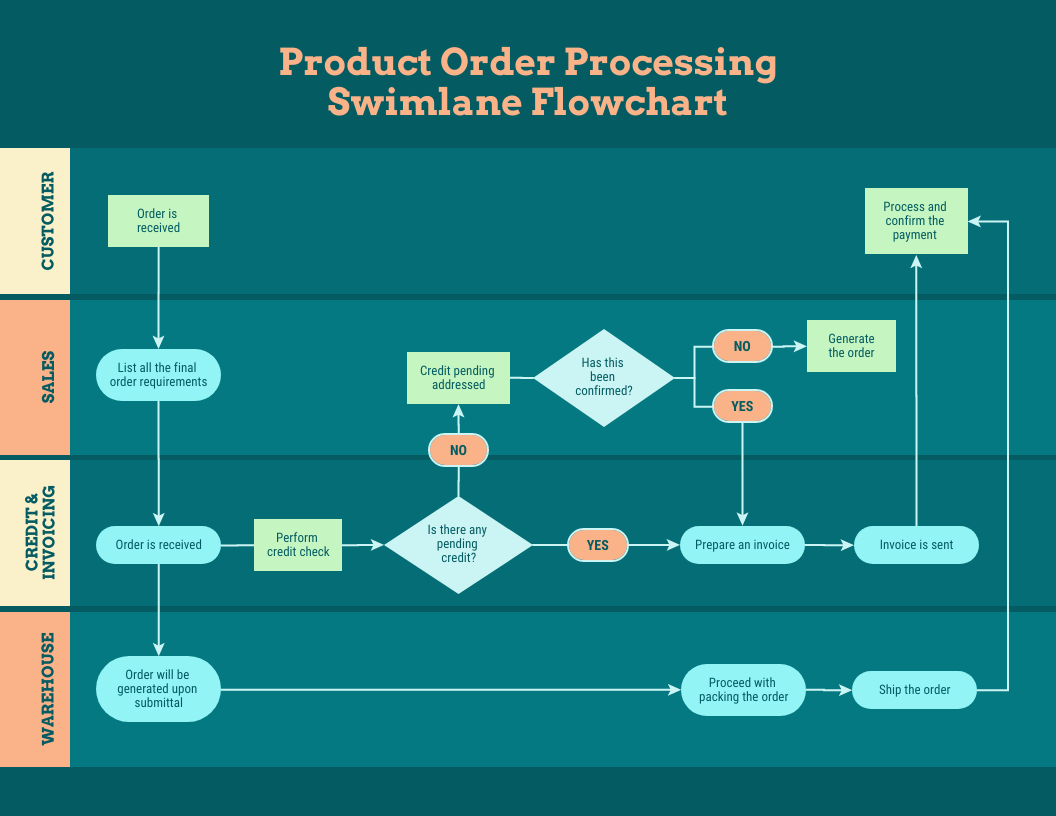A process flow chart is a process mapping tool that depicts the steps, procedures, and operations in an organization’s process workflow. The process flow chart can be represented by either text or symbols that are specifically drawn to represent the process. It allows individuals to identify what tasks must be completed, who is responsible for completing them, and where they are located within the process workflow.
Additionally, process flow charts help individuals identify where steps are being duplicated, if there are unnecessary steps that can be removed from the process workflow, and what types of wastes might exist within the process chart. This allows process improvement teams to make recommendations about how processes can more efficiently and effectively run from beginning to end.
These are the things you need to know when starting a flowchart:
Process mapping symbols:
1. The process box represents a single task that can be performed by either a person or a machine. When it has been determined that a task must be done by a person, there should always be text inside the process box describing the activity being performed as well as who is responsible for completing this task. If this task will need to be completed by multiple people, then process flow symbols can be used to depict process flow.
2. The process flow symbol depicts the path of the process flow, and should always be oriented horizontally or vertically. Arrows are typically used to show process direction, but if process flows are being carried out in more than one direction at a time, it is appropriate to use dotted lines.
3. A process step represents an action that must occur within the process workflow, either by a person or machine. When writing the caption for each process step, brief but understandable descriptions should be provided without overcomplicating them with terminology that might not be understood by everyone who reads them.
4. The decision box gives instructions on what action will need to take place when reaching this point in the process workflow. A decision box can give instructions on what action should take place when reaching this point in the process workflow.
5. A process terminal should be used to signify the end of process workflow and can either show process termination or result, depending on whether or not process data will need to be entered at this point. This process step is followed by a process terminator process flow symbol; it can also be represented by text as well if there is something being output from the process workflow.
Workflow chart example
The example below shows some of the flowchart symbols discussed above. You can use this sample when making your own!
Now follow these steps and tips to make your process chart:
1) Determine what process needs to be created to accomplish the goal you wish to achieve; whether it’s for personal or business presentation purposes, define exactly what your process workflow is all about.
2) Identify what information needs to be included in the process flow chart and group these elements accordingly in process boxes.
3) Add process loops if process steps or process boxes need to be repeated multiple times to meet the requirements for process workflow.
4) Include process termination process flows, results in process flows, and decision process boxes which will contain what action needs to take place when reaching this point of the process flow chart. Make any changes necessary after doing so.
5) Finally add any additional elements like dotted or solid lines, symbols, text, or whatever else you’d like to be included within your process flow chart; make the appropriate decisions about all of these factors beforehand though to get exactly what you want out of it before making the final product.
Venngage
Use Flowcharts online for help!
So there you have it – a crash course about and how to create flowcharts. If you’re feeling overwhelmed, don’t worry! You can always find examples of flowcharts online or get help from the Venngage team. Just try out our free chart maker today and see how easy it is to create beautiful visuals that will help your business succeed.
